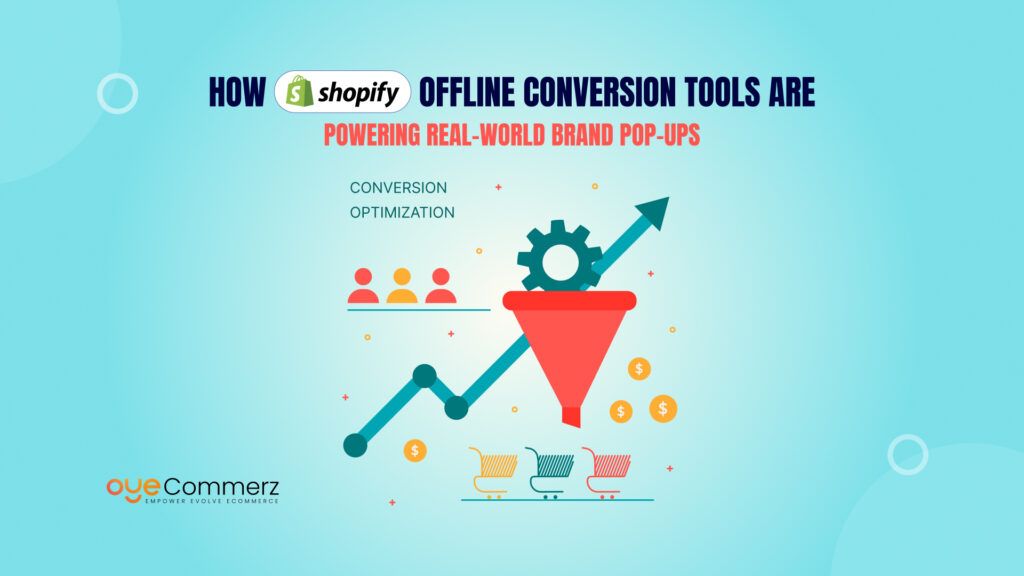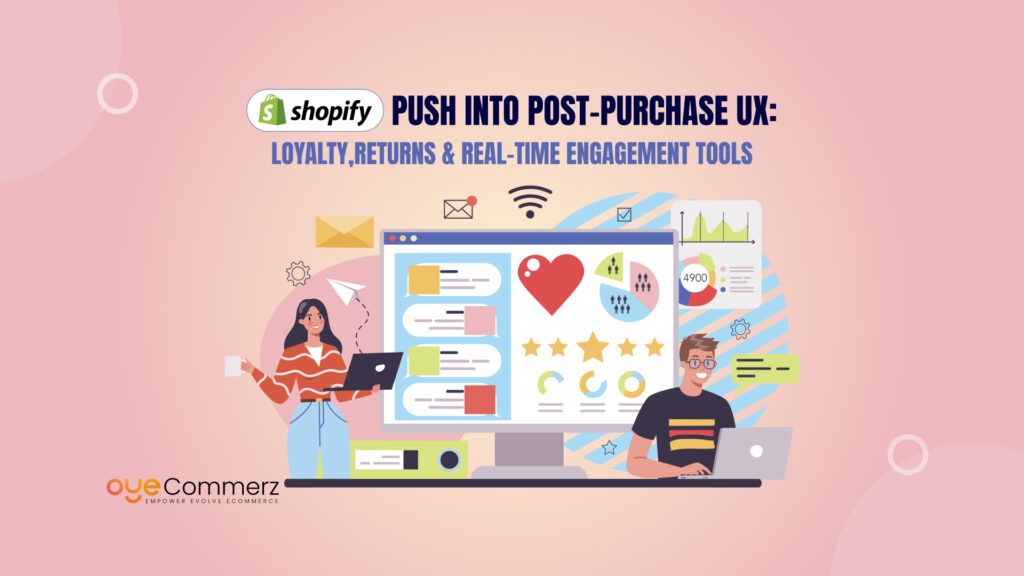For e-commerce business owners, staying competitive goes beyond offering excellent products; it’s about delivering a superior shopping experience. Shopify users know that the key to enhancing their store lies in combining the right apps with custom Shopify theme development. These integrations can elevate your store to the next level, improving customer usability and boosting your conversion rate.
However, integrating Shopify apps into custom themes isn’t always straightforward. It requires a strategic approach, starting with a clear understanding of your store’s needs and ensuring that all components are seamlessly coordinated. In this blog, we will explore the most valuable integrations for your Shopify store, discuss their benefits, and provide insights on how to integrate them effectively with your custom theme. We’ll also address common issues and their solutions, helping you maintain a high-performing store even after integration.
Table of Contents
ToggleShopify Apps and Custom Themes Overview
To better jump into the most popular integrations and the general topic of online stores, let’s first define what Shopify apps and custom themes mean, and their impact on your store.
- Shopify Apps are the features that can be installed in the store to enhance the store’s performance. It includes almost all areas from marketing automation, inventory management, customer support, analysis, and many more. Shopify App Store contains thousands of apps for different needs and focusing on making stores unique and appealing does not require hiring programming skills.
According to a report by Shopify, over 87% of merchants use apps from the Shopify App Store to extend the functionality of their stores. This demonstrates the reliance on apps to improve store performance and the importance of choosing the right integrations. - Custom Themes on the other hand are the source of the appearance and structure or layout of the store. Most of the Shopify stores use custom themes since the platform has only a few free and paid themes available. Custom themes can be created using Shopify’s Liquid template language along with HTML, CSS & JavaScript for setting up comprehensive customization.
As we have seen above, these two fundamental elements of the store ios apps and themes when well developed, can create a coherent and efficient store that would highly improve user experience and conversion. According to data from a BigCommerce report, stores that effectively integrate apps and themes see an 18.5% increase in average revenue per user, showing the financial benefits of a well-optimized store.
Benefits of Integrating Apps with Custom Themes
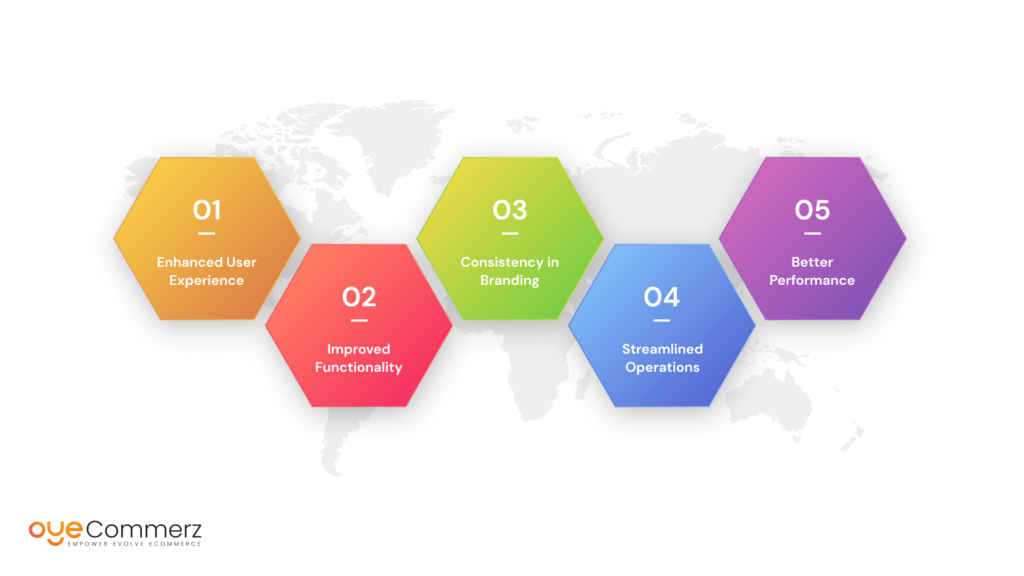
Integrating Shopify apps with custom themes offers several benefits that can enhance your store’s functionality and performance:
Enhanced User Experience
Integration or the combination of both online and offline strategies makes it easier to have a special one-on-one encounter with customers. Features such as the chatbot, a personalized recommendation system, and a customer reviews widget can be easily embedded into your custom theme to increase conversions and navigate the user to check out.
Improved Functionality
Each app offers functions that can also be created with the basic setup of Shopify but have not been included. For instance, pulling in applications that manage abandoned cart strategies, thorough analysis, or a customer loyalty program, can provide you with competitive leverage in pushing your sales and holding your consumer base.
Consistency in Branding
If your homemade app is connected to your custom theme, it is possible to make the home page, product lists, product images, cart, and checkout page have your unique corporate color. This kind of consistency is reassuring to customers and is a constant reminder of what your brand is about.
Streamlined Operations
To streamline operations and enhance efficiency, consider adding applications like inventory management, order processing, and shipping to your Shopify store. These tools can significantly reduce manual intervention, allowing you to focus on creating effective marketing campaigns and driving growth.
Better Performance
For this reason, properly integrated apps can give an added boost to your store’s functionality, by making it load faster and by minimizing the risk of applications interfering with each other. This is important to ensure the quality of the content delivered to users, who will need to turn to the service in the end.
Steps to Integrate Shopify Apps with Custom Themes
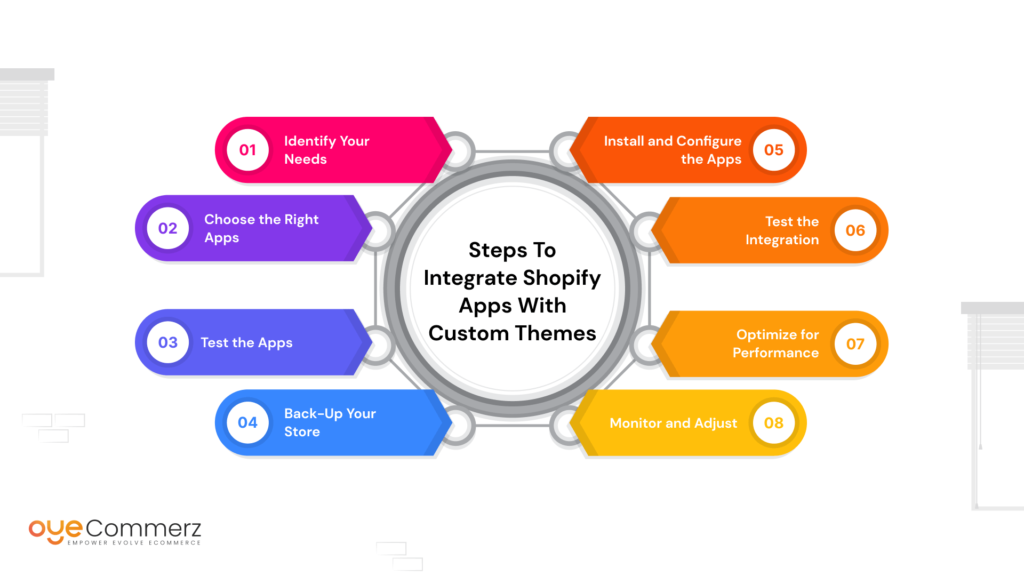
Seamlessly implementing Shopify apps with unique themes poses a real challenge in that several aspects need a lot of consideration and planning. Here’s a step-by-step guide to help you get started:
Identify Your Needs
First, determine the particular requirement of your store In that case. Do you want to boost users’ interest, make operations easier, or increase the performance of your store? List the required functionalities and the apps that offer them.
Choose the Right Apps
After evaluating your needs, search the Shopify App Store and look for applications that suit your needs. Choose well-received apps, well-backed up, and supportive of Shopify. You also should verify whether the app can be integrated into your store’s design in some way.
Test the Apps
If you plan to launch an app in your live store then it is highly advisable that first you run it rigorously in the development environment. This makes it possible for you to examine the various ways through which the app is going to integrate with your custom theme and then fine-tune it if need be before going to the market.
Back-Up Your Store
First of all to avoid data loss or the theme not working properly, always backup your data and theme files before making any kind of changes to the store. This means that there is no point in time where you can be stuck in the middle of integrating a change without any way of going back to the previous state.
Install and Configure the Apps
If possible, go through the necessary download procedures as indicated by the app developer to install and configure the app. This generally entails incorporating the app’s code into your theme files and configuring such settings of the application to suit your stores design and functionality needs.
Test the Integration
Once the app is installed you have to test it regularly to check compatibility and proper functioning with the customized theme. Ensure that there are no conspicuous signs, slow-running processes, or headaches with other applications.
Optimize for Performance
After making a test to the integration, make your store perform more than it used to. This may include: reducing the size of other content such as code and images, as well as applying other techniques like lazy loading to ensure that your store loads in a very efficient manner.
Monitor and Adjust
Once the integration is done, it is advisable to keep on checking your store frequently to confirm its proper functioning. In case you have to fine-tune the appearance and functionality of your tool to provide the best experience to users, be ready to do so.
Types of Integration Errors and How To Avoid Them
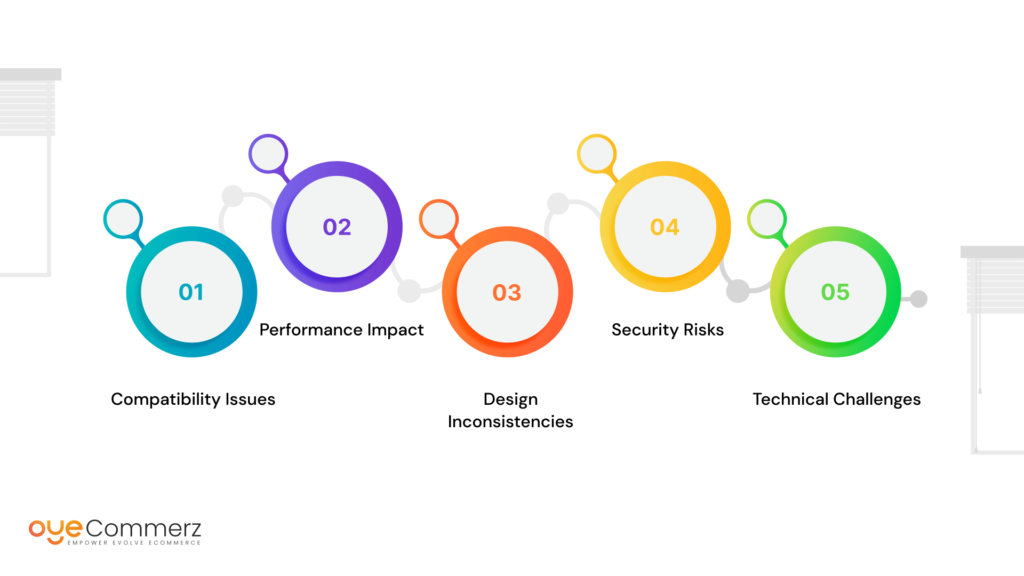
Getting Shopify apps to work with custom themes has several issues, but if addressed right at the beginning, they should not cause too many problems. Here are some common issues and how to overcome them:
Compatibility Issues
Predefined themes may work for all apps but with custom themes, not all the apps are compatible. Take care to ensure that an app does not interfere with the current Theme and other apps that one intends to incorporate. If you are aware of some incompatibility problems, then it will be wise to seek the services of a developer to rectify this by either changing the app or altering the theme so that it can work well with the other.
Performance Impact
Too many apps in the store or low-quality apps can greatly cause issues and this decreases conversion rates in the store. To avoid these issues, ensure that one chooses relevant mobile applications to be integrated into the home automation system and only those that will be of most use. Reset apps periodically and uninstall all the apps that are not necessary for the operations of your store.
Design Inconsistencies
Mobile applications not designed to blend with your website’s theme are not appealing to the users’ eye. For continuity and brand identity, modify the elements that define the look and feel of your application according to your theme. Most applications allow at least some degree of customization but if not then the application may have to be altered at a code level to ensure that it looks consistent.
Security Risks
Integrating third-party apps into your Shopify store can introduce new security risks, as these apps may have access to sensitive client data. To mitigate these threats, follow these security practices for your Shopify store: Download apps only from reputable developers and regularly review app permissions and security settings to ensure your store’s data remains protected.
Technical Challenges
For instance, if you are not very much into using codes, it becomes a bit challenging when one is combining the apps with custom themes. In such cases, it is desirable to contact a specialist within the framework of services related to Shopify or a developer to help with integration. They can also make sure of installing and setup of the apps in the right manner to avoid cases of developing some serious errors.
Managing Your Store After Integration
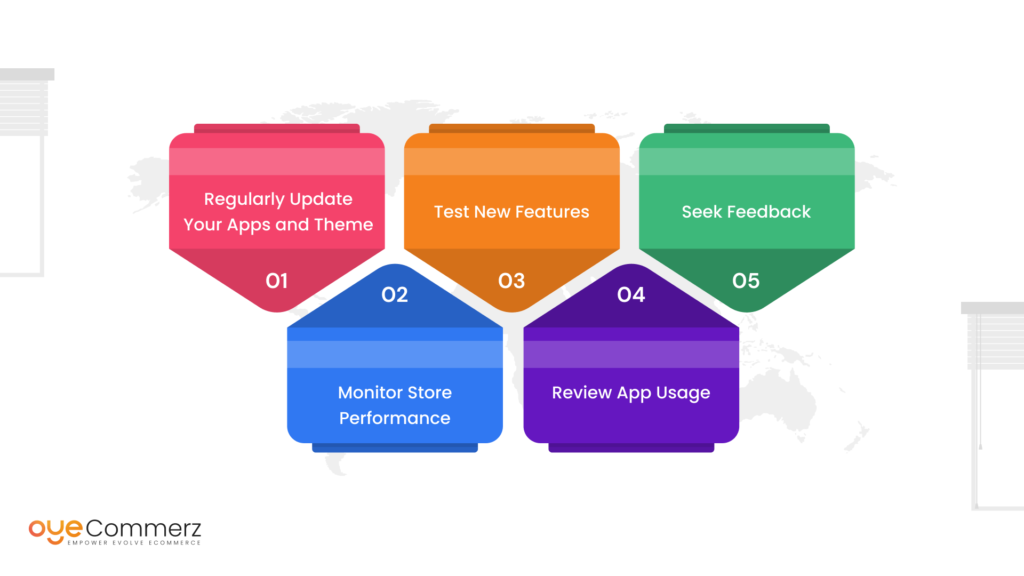
After you have been able to integrate apps with your custom theme, there are a few things that you have to do in order to keep your store running smoothly. Here are some tips for ongoing maintenance:
Regularly Update Your Apps and Theme
Software developers update apps often to enhance usability and to plug various security loopholes. It is also recommended to update your apps and the theme, as it will allow using those enhancements and won’t cause compatibility problems.
Monitor Store Performance
Some of the metrics you should keep track of include; To do this, you should use Google Analytics and the analytics of your Shopify store. Finally, monitor important referral statistics such as average time to load a specific webpage, percentage of people bouncing off the site, and conversion rates among others with a view of having insight on areas of concern.
Test New Features
Whenever you are adding new apps or features to your store, first, conduct some tests on the development environment and then make them live. This way, they do not post something that will affect your store’s performance or the user experience in the wrong way.
Review App Usage
Think of going through the various applications that are in your store with regard to their usefulness in the current times. Uninstall any apps that you no longer use or which are not useful for your store, in order to optimize the flow of the store.
Seek Feedback
From the list of tips that can be given on shopping for clothing, the following should be understood and practiced: Analyze it in order to point out the weaknesses and strengths of the service and make corrections to improve user satisfaction.
Take Your Shopify Store to Great Heights with OyeCommerz!
At OyeCommerz, we specialize in seamlessly integrating Shopify apps with custom themes, ensuring your store looks stunning and performs flawlessly. Our expert team can help you choose the right apps, customize them to fit your brand, and optimize your store for maximum impact. Don’t let technical challenges hold you back—partner with us to create a cohesive, high-performing e-commerce experience that drives sales and delights customers.
Contact OyeCommerz today and start transforming your Shopify store into a powerhouse of success!
Contact to Build your Shopify App Now
Conclusion
Combining Shopify apps with custom themes can significantly enhance your Shopify store by increasing functionality, improving user experience, and boosting overall efficiency. However, integrating these elements is not always straightforward—it requires careful planning, thorough testing, and strategic adjustments to achieve the best results.
When selecting Shopify apps and developing a custom theme, it’s crucial to understand your store’s specific requirements and follow best practices for integration and maintenance. By proactively addressing potential challenges and ensuring that your custom theme and apps work seamlessly together, you can create a store that not only meets but exceeds user expectations. Embrace the opportunity to refine your Shopify theme development and integration strategy to stay ahead in the competitive e-commerce landscape.



